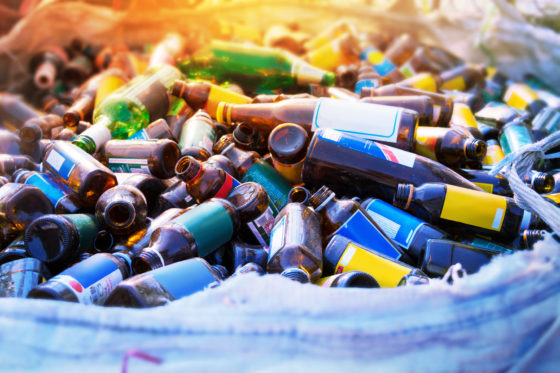Today’s waste and recycling industry workers may be exposed to a variety of hazards as they collect and sort electronics, scrap metal, glass, and much more.

Photo credit: iStock.com/kettaphoto
This is the first post in a series about workplace hazards in the (ever-growing) recycling industry.
In the past, most of what our communities threw away went to landfills. Nowadays, we have many different types of recycling, and workers are using new products, procedures, and technologies to process various kinds of waste. The waste includes things like electronic circuit boards, industrial waste water, materials salvaged from demolished buildings, and the contents of residential blue bins.
While there are obviously many good things about recycling, it raises a whole new set of workplace safety concerns.
“There are problems with exposures to all sorts of different hazards as workers break this stuff down. It’s a problem country-wide and all over the world,” says Geoff Clark, a senior occupational hygienist at WorkSafeBC.
He told me about one case, for example, that happened in 2010 in the U.S. One worker died and at least four others were injured at a metal recycling facility when a chlorine tank exploded amid a pile of scrap metal that workers were processing.
He adds: “In newer industries like recycling, you don’t just get recognized hazards, you also get new hazards that you might not expect until there is an incident or disease.”
Waste and recycling industry employs many new and young workers
Geoff would like to see better training for workers in the recycling industry. Many are young and new workers who, statistically, are more likely to be injured.
“Most of the time, these workers don’t get a sufficient amount of training because it’s a manual sorting job,” Geoff says, adding that he’s seen many workers who are not aware of the risks they face. “Occupational diseases can develop over a period of time from exposures you had years ago.”
Employers need to know how much is too much chemical exposure at work. They also need to know about Occupational Exposure Limits (OELs), which are described in detail in OHS guideline G5.48-2. (Specific OELs are set out in the Table of Exposure Limits for Chemical and Biological Substances.)
Geoff and his team in WorkSafeBC’s Risk Analysis Unit (RAU) publish risk advisories to inform industry and the public about new types of workplace hazards as they evolve. The RAU has published two risk advisories related to the recycling industry: Explosion or fire at recycling facilities that process explosive or flammable materials and Combustible dust explosion or fire outside of primary wood processing. (Also read my post An evolving approach to injury prevention to learn more about the RAU’s efforts to address risk before it leads to injury.)
Stay tuned for my next post on the recycling industry, about personal protective equipment.


